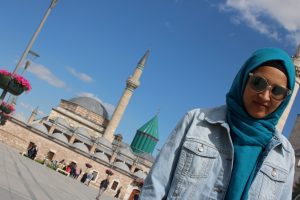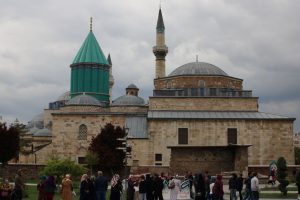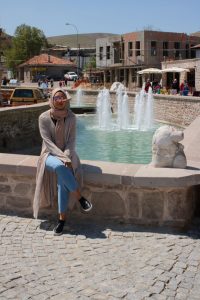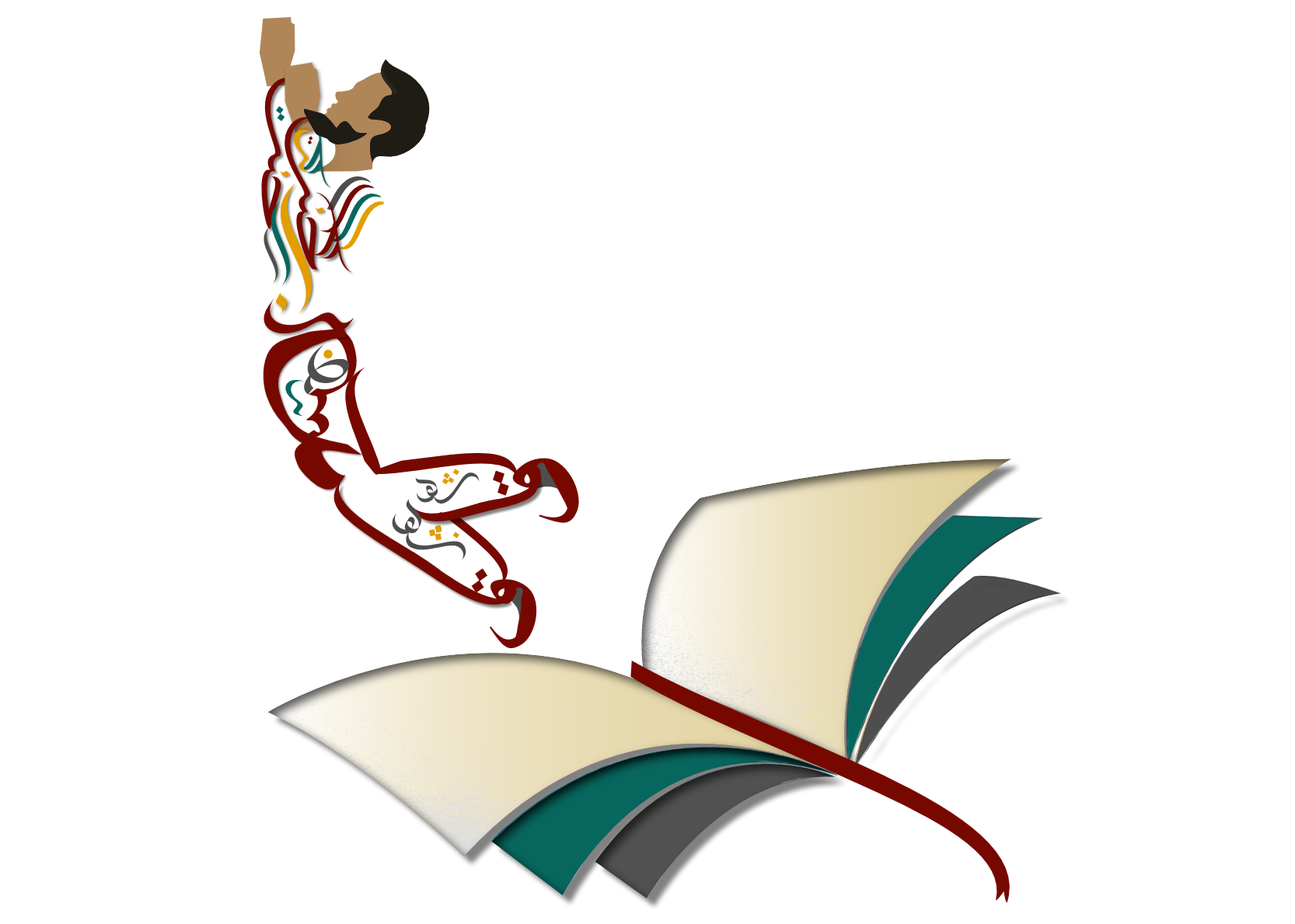I was blessed this year to travel to Turkey for my first road trip through the beautiful country. I had dreamed of this trip for years! While on the road I shared some highlights of my travels on my social media, and received hundreds of requests to write about this incredible journey and give some details on where I went and what I got up too. I had such an amazing time with my mini family and truly wish for everyone to take this trip of a lifetime.
Turkey is a incredible country seeping of world history – not just Islamic. It was absolutely beautiful to witness the fusion of histories and peoples from East to West, who have settled in Turkey through different eras. The Turkish people ethnically are very diverse originating from Europe, central Asia and Arabia – it is only once you travel the land, in its entirety that you appreciate the rich history and ancestry of the Turks.
The modern state of Turkey is relatively young, founded in 1923. However, previous to this we tend to forget that Christian principalities existed in Central Turkey (Anatolia) for decades, and even Muslim rule was broken into Beyliks (small states) before the formation of a modern nation state. Due to this, Turkey has a variation of cultures, languages, and religions. Although it is s a majority Muslim country, regional identity is strong – tribal links are still celebrated as the Turkish people were once nomads moving around the whole region- including modern day Syria and Iraq.

This map demonstrates how different Central Turkey, (referred to as Anatolia) was in the 13th century. The Seljuk Turks dominated most of the territory, however Christian Catholic principalities existed in large areas which explains Turkey’s extensive ancient Christian historical sites where Orthodox communities lived for centuries. Thousands of Christians (Catholic & Orthodox) travel to Turkey to connect with their past.
What inspired my travels?
In all honesty – I have always found the Ottoman period very difficult to grasp. I have read textbooks, listened to history lectures but struggled with fully understanding the period. To understand Turkish history – You must go to Turkey. To visit its palaces, to view the relics of the Islamic world that Turkey possesses, as well as visit sacred sites. The more you travel this beautiful country – the more you start to build a picture of it’s magnificent past. Anyone who visits Turkey cannot escape its Ottoman influences. A past of glory, honour and strength which sadly weakened over it’s 600 year rule. To understand its magnitude, its dominance in the world, and also its threat to Europe – see the map below. The Ottoman Empire was successful in reaching as far as Vienna, the Balkans and North Africa.

KONYA
First Stop – KONYA!
As soon as we got into the queue for our internal flight I knew that Konya is the place to visit if you want a true experience of conservative Islam in Turkey. We were the only foreigners on the flight surrounded by Turks draped in Hijab, young Turkish men with religious beards and attire – something I was not accustomed to seeing- until now! I’ve visited Turkey 6 times previous to this but never witnessed such an outward display of religion – even in Istanbul.
Konya is the city of Rumi and his Mevlivi dervish order. Thousands come to Konya to visit the resting place of this great Sufi. Muslim and non-Muslim honour his life by visiting his tomb and lodge within the beautiful Selimiye masjid complex. The resting place of Mevlana is the centre point of the whole city and as you walk the streets you can feel the scholarly air around you. There are sacred graves all around Konya of saints and scholars – mainly known by the Turks themselves who will visit and stand and make Dua for their ancestors for what seems like hours. There seems to be a great respect for their Islamic past, their scholars, teachers and those who established a Turkish Islamic identity.
I couldn’t help but wander how life must have been like in the height of Islamic scholarship with superstars like Rumi delivering lectures to thousands who would gather in this great city just to hear him speak. How different a time when Islamic identity and expression was pinned on scholarship and seeking knowledge at the feet of such scholars. I couldn’t help but long for that in today’s world, in which the masses of Muslims receive their Islamic teachings from You-tube and the Internet.

Mevlana Turbesi (Tomb of Rumi)
You will need most part of the day at the Mevlana Turbesi. If your anything like me I like to wander around and soak in all the history – but also have some time for praying, sitting in the grounds and reflecting. You can hire audio commentary while you visit Rumi’s Tomb which I highly recommend. There are so many stories behind the artefacts, architecture and different chambers of the complex which I’m sure you want to know!
My Ustadh once told me – ‘to know Rumi, You need to understand his era!’
Muhammad Jalaludin Balki Rumi (1207-1273) came to Konya as a young man after fleeing from the Mongol invasion of Balk (modern day Afghanistan). The family travelled through the Muslim world first visiting Mecca and then settling in Rum before reaching Konya, where his father Baha’ ud-Din Walad was appointed in charge of education.
On the death of his father, Rumi was appointed head of education at the age of 25. He ascended the ranks of Islamic theology, sciences and philosophy. Thousands would come to Konya to hear him speak. After his father’s death in 1231, a former student of his father’s came to Konya and encouraged Rumi to travel to Aleppo and Damascus. This was at the height of his scholarly career, and in his politeness Rumi accepted this offer. He returned to Konya in 1240 after meeting Shams Tabrezi, his great teacher who introduced him to Sufism and inspired all of Rumi’s future writings.
Rumi and his father are buried in the mausoleum (Kubbe-i-Hadra), built by his successor Hüsamettin Çelebi.
Sultan Aladdin Hill

Sultan Aladdin Hill is not just a site but a monument in Konya’s history. On building this Masjid, Sultan Aladdin is known to have said, ‘gather all the earth, in honour of this Masjid’.
The Sultan did this out of the desire to celebrate the birth of this great institute of Islamic learning, under the leadership of some of the greatest Imam’s in the Islamic world. The Masjid stood at the highest place in Konya in the 13th century.
All Konya’s main roads lead to the Sultan Aladdin Hill and this is the site of where the great Sultan is buried. The style of this Masjid is very different from the Ottoman Masjid’s of Istanbul. The Seljuk style has less domes and patterned tiles and more bricks, wood carvings and pointed minarets. The difference in style from the Seljuk to Ottoman period is fascinating! To appreciate the Seljuk architecture, it is necessary to go deeper into mainland Turkey, instead of sticking with the popular tourist destinations.
Sille Subaşı

Sille is a small Turkish village just outside of Konya and is incredibly beautiful. It is was one of the few villages where the Cappadocian Greek language was spoken until 1922 (in 1922 Attaturk founded the Turkish state a year later and banned many identifications of religion to form a secular state). Sille was inhabited by Greeks who had been living peacefully with the nearby Turks of Konya for over 800 years. It has a beautiful river running through and lots of history on crafts, pottery, agriculture and cloth making. It was the powerhouse for Konya in terms of importing goods into the city for sale and use.
There is a museum at the start of the river which is a great commemoration to the agricultural history of Sille, as well as the crafts that locals were involved in. At the end of the river is the site of a church which was restored by the Sultan of the time to display Islam’s tolerance and peaceful co existence with minority communities or people of a different religious background.
If your a lover of visiting rural and natural landscapes – Sille is perfect.
Whirling Dervishes
You cannot leave Konya without seeing the ultimate symbol of global Sufism which originated in this great city! The whirling dervish is woven into the history of Islam in Turkey which stands for spirituality, religious expression and Islamic art forms. There is a free show on Saturday’s at the Mevlana Cultural Center. I highly recommend watching this show as there are stalls, food and Islamic art available to purchase after the show. There is also beautiful calligraphy displayed all around the exhibition centre which should not be missed.
Travel Tips
The cuisine all over Turkey slightly differs – In Konya almost every Turkish place you go to is a meal of tender slow roasted meat, yogurt, bread, fresh salad with the juiciest tomatoes and lots of parsley, chilli and pickles. This mezze style eating is the way to go OR if that doesn’t sound appealing traditional pides (turkish flat pizzas) are the only other option. The cuisine in Konya is quite limited as Konya hasn’t yet been infiltrated by international cuisines – its mainly a local experience, and this is reflected in what food is available.
I personally enjoyed the authentic experience of Konya, the people are very honest including shopkeepers who do not pester you for sales and give good prices. For any Ertugrul merchandise, islamic books on Sufism and Ottoman art make sure you buy in Konya! I made the tragic mistake of not buying enough and regretted it my entire journey.
NEXT STOP… CAPADOCCIA






2 thoughts on “Road Trip through Turkey : Konya & Sille”